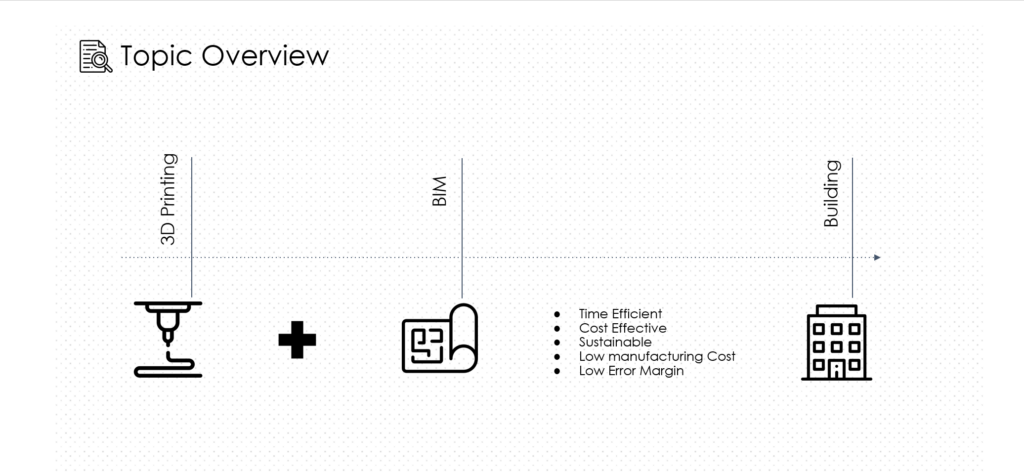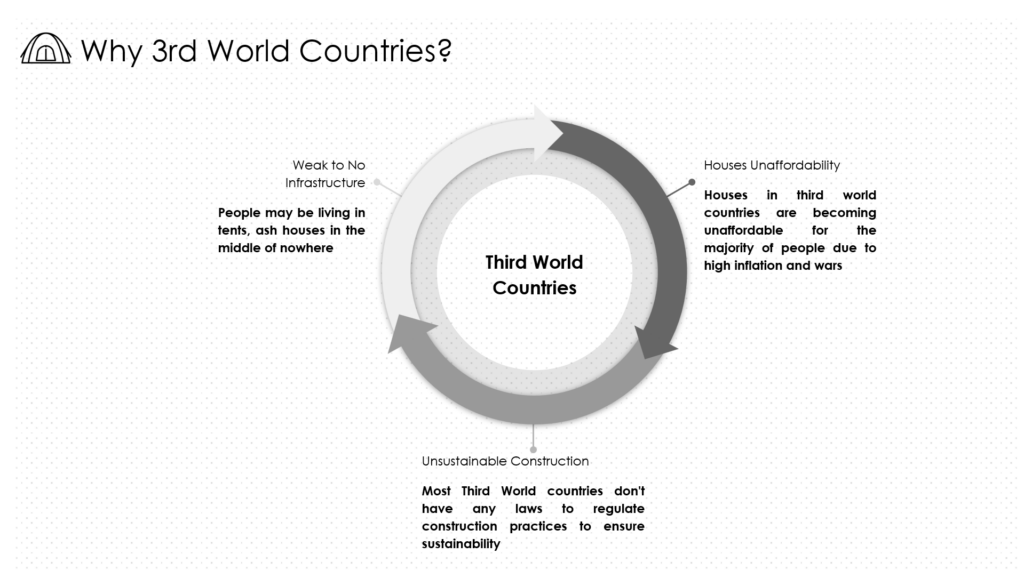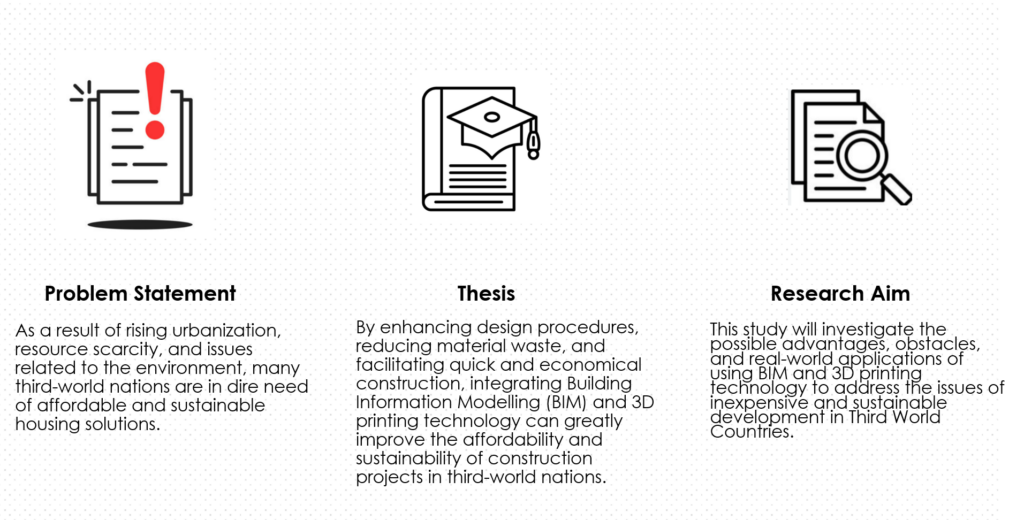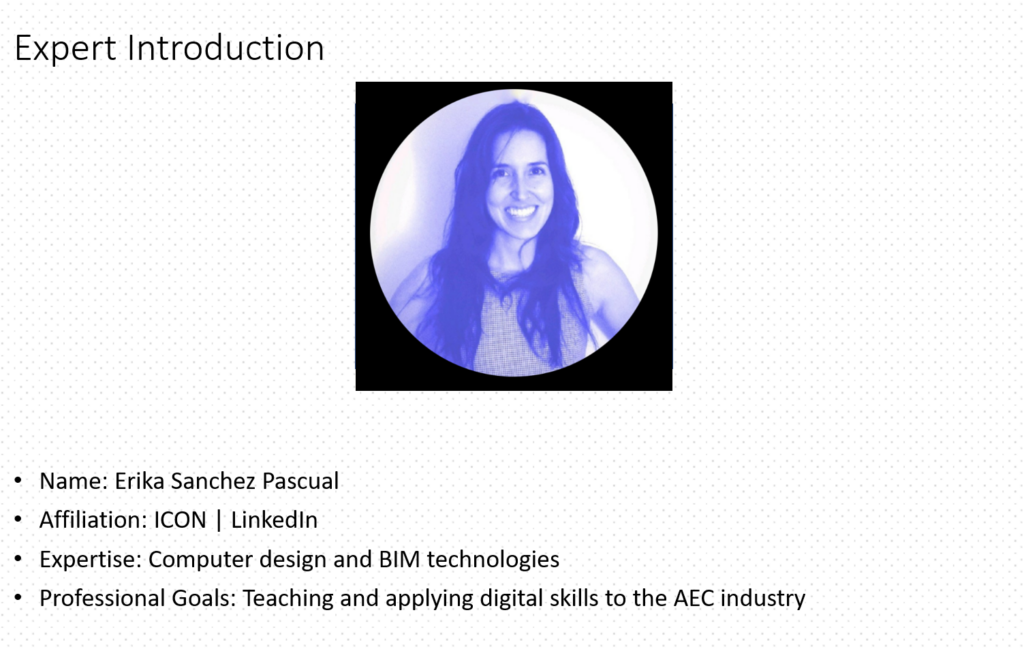
•Building Information Modeling (BIM) and 3D Printing technologies offer a transformative potential in addressing housing challenges in third-world countries. BIM facilitates a comprehensive digital representation of construction projects, enhancing collaboration, reducing errors, and optimizing resources. In tandem, 3D Printing enables cost-effective and rapid construction, allowing for the creation of affordable and sustainable housing solutions. Together, these innovations streamline the construction process, minimize material wastage, and provide a scalable approach to meeting the pressing housing needs in economically disadvantaged regions.

•This study explores the innovative applications of Building Information Modelling (BIM) and 3D printing in architecture, closely analyzing how these technologies affect efficiency, affordability, and teamwork. The study gives special attention to managing housing emergencies, building quickly, and adopting sustainable approaches. It examines how particular 3D printing materials and sophisticated equipment might be used to create affordable and ecologically friendly dwellings. ICON is a notable example of this revolutionary strategy, transforming the building industry’s future by becoming the first to employ state-of-the-art 3D printing technologies and materials to create sustainable housing solutions.


- Erica Sanchez: Accomplished architect and tech enthusiast
- Roles: Development Manager, Research and Development Manager at Morphe Studio
- Expertise: Specialist in programming new technologies and applications
- Experience: Led computational design teams; worked on MEP and structural engineering coordination
- Innovations: Contributed to projects like IBOT, exploring BIM and AI integration
- Passion: Dedicated to automation, streamlining processes, and staying updated on tech advancements
- Podcast Focus: Shares insights on 3D printing and BIM intersection in a dynamic and concise conversation.
Specialized in computer design and BIM technologies, her expertise lies in programming and tool control as a critical and accurate approach to the project. Teaching and applying her digital skills to the AEC industry is the goals of her professional development.
Podcasts Brief
•The podcast delves into key topics with architect and BIM/3D printing advocate Erica:
•Sustainability in 3D Printing:
•Discussion on 3D printing’s sustainability in construction.
•Erica highlights metrics like minimal waste and certifications.
•Emphasis on factors such as geometry, design, materials, life cycle, and time in determining sustainability.
•Impact on Project Control and Accuracy:
•Exploration of how 3D printing, coupled with BIM, influences accuracy and project control.
•Erica discusses BIM’s role in addressing construction challenges and improving project management.
•Acknowledgment of 3D printing’s early stage with optimism for future precision advancements.
•Challenges in Implementing BIM and 3D Printing in Developing Countries:
•Examination of obstacles in introducing 3D printing and BIM in underdeveloped nations with limited resources.
•Erica stresses the need for a thoughtful approach, considering local conditions, culture, education, and resources.
•Discussion on the potential of these technologies in addressing housing issues and disaster response in developing countries.
•Overall :
•The podcast sets the stage for an in-depth exploration of the BIM and 3D printing relationship, covering sustainability, accuracy, project management, and challenges faced by developing nations.
Questions
1.Could you give a quick rundown of the ways that 3D printing, and BIM technology might support sustainable and affordable housing in developing nations?
• How can the sharing of these skills help promote the widespread adoption of sustainable practices?
2. Expertise: Having worked in computer design and BIM technologies for a while, how have you seen these tools’ development and how it affects project control and accuracy?
• Interesting so I’m also wondering about the process of 3d printing buildings, and the software you guys use to do so. Can you tell us more about it?
3. what about the developing nations, what are the difficulties and obstacles associated with putting BIM and 3D printing technologies into practice in these areas of the world with little funding, and how can we tackle these challenges?
4. When we talk about developing countries and the limitations that comes with it, how does this relate to the concept of 3d printing in extreme environment?
5. So, at the end, what developments or trends do you see coming up in the use of 3D printing and BIM in the future for both developed and developing nations?
Conclusion
•Erica states that she is delighted with the conversation, calling it “delightful” and “beautiful”.
•The discussion makes evident that the potential of 3D printing technology is not yet fully realised, and it makes suggestions for future advancements and improvements.
•It is highlighted that 3D printing has enormous potential, both technologically and in terms of fostering a more sustainable future.
•Erica brings up the continued trend of industrialization in the building and architectural fields, utilising a variety of techniques such as automation, prefabrication, and 3D printing.
•Before choosing the best technology solutions, it is crucial to comprehend the actual needs of developing nations.
•Erica says that these countries will probably figure out what solutions—whether it has to do with prefabrication, 3D printing, or something else entirely—that work best for them.
•The overall message is upbeat, emphasizing how construction technology is developing and how it may help build a more sustainable and effective future.

